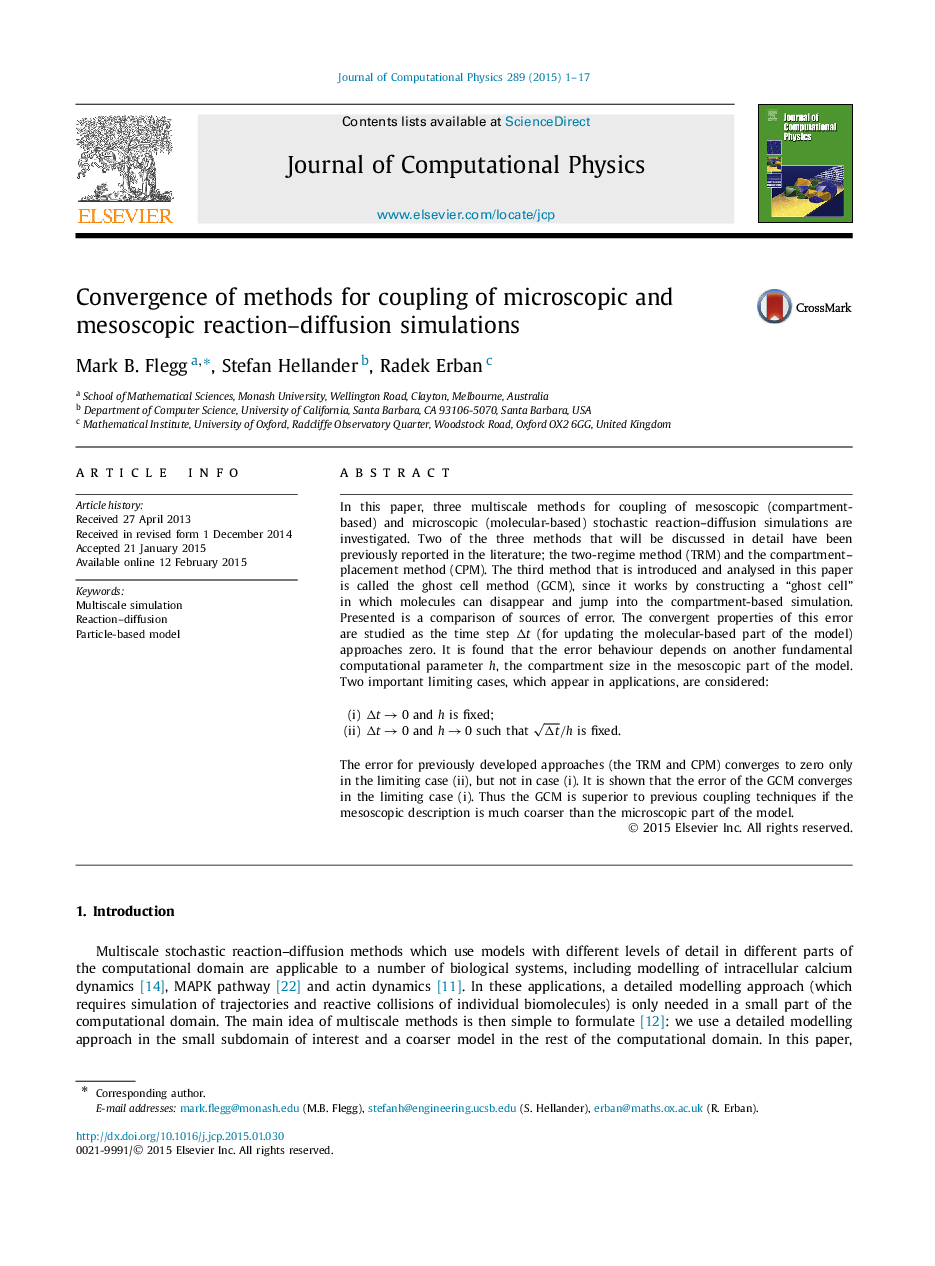| کد مقاله | کد نشریه | سال انتشار | مقاله انگلیسی | نسخه تمام متن |
|---|---|---|---|---|
| 519821 | 867684 | 2015 | 17 صفحه PDF | دانلود رایگان |
In this paper, three multiscale methods for coupling of mesoscopic (compartment-based) and microscopic (molecular-based) stochastic reaction–diffusion simulations are investigated. Two of the three methods that will be discussed in detail have been previously reported in the literature; the two-regime method (TRM) and the compartment–placement method (CPM). The third method that is introduced and analysed in this paper is called the ghost cell method (GCM), since it works by constructing a “ghost cell” in which molecules can disappear and jump into the compartment-based simulation. Presented is a comparison of sources of error. The convergent properties of this error are studied as the time step Δt (for updating the molecular-based part of the model) approaches zero. It is found that the error behaviour depends on another fundamental computational parameter h, the compartment size in the mesoscopic part of the model. Two important limiting cases, which appear in applications, are considered:(i)Δt→0Δt→0 and h is fixed;(ii)Δt→0Δt→0 and h→0h→0 such that Δt/h is fixed. The error for previously developed approaches (the TRM and CPM) converges to zero only in the limiting case (ii), but not in case (i). It is shown that the error of the GCM converges in the limiting case (i). Thus the GCM is superior to previous coupling techniques if the mesoscopic description is much coarser than the microscopic part of the model.
Journal: Journal of Computational Physics - Volume 289, 15 May 2015, Pages 1–17
